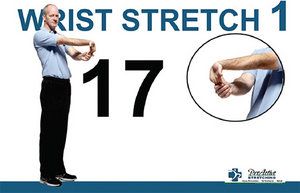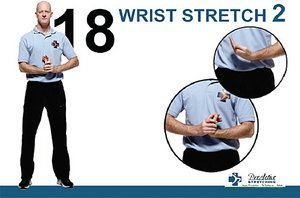Some doctors thrive in a personality-based clinic and have a loyal following no matter what services or equipment they offer, but for most chiropractic offices who are trying to grow and expand, new equipment purchases help us stay relevant and continue to service our client base in the best, most up-to-date manner possible. So, regarding equipment purchasing: should you lease, get a bank loan, or pay cash?
Finger (Pad) Pointing: Repetitive-Use Injury Waiting to Happen
"My wrist and hand hurt. I spend all day working on computers and then I come home and spend more time on a computer, usually playing video games." Health care providers hear this complaint with increasing frequency due to the increased use of computer finger pads and smartphones.
Using a computer finger pad requires making small, exact movements with the index finger. The repetitive strain of holding the finger in a pointing position, hovering just above the button in a "waiting to click" position, taxes the extensor indicis muscle in the forearm.
The proximal insertion of this muscle is near the distal end of the ulna on the medial side. Distally, it attaches to the extensor apparatus of the index finger. The action of this muscle is extension of the index finger. It also assists with adduction of the index finger. (Image 1)
Over extended periods of time, the continual strain caused by repetitive finger hovering eventually leads to inflammation and swelling of the extensor tendon.

Diagnosis
Physical exam findings include tenderness and weakness of the extensor indicis muscle. The pain may be exacerbated by squeezing / gripping with the hand, prolonged finger hovering or extensor resistance.
Look for a loss of range motion in both flexion and extension of the index finger, guarded motion and/or a loss of coordination. Muscle testing involves having the patient fully extend the index finger and resist finger flexion. Muscle test bilaterally and note deficiency of the involved indicis muscle.

Treatment
Effective correction involves reducing the guarded status of the injured muscle. Applying a tolerable press-and-hold force into the proximal insertion of the extensor indicis muscle for 3-5 seconds will affect the Golgi tendon organ nerve fibers. This press-and-hold maneuver should result in reduced muscle tension and increased muscle power output.
Pin-and-stretch manipulation also can be performed into the muscle belly fibers to reduce adhesions and restrictions in the soft tissues. Post-treatment evaluation should note increased strength and range of motion, and decreased pain.

Rehabilitation
Stretch the index finger muscles by placing the palm up and creating maximum pain-free extension of the finger. Gently rotate the hand side to side to help unlock the most joint and muscle tension possible. Next, combine wrist flexion with full flexion of the index finger in a pain-free manner. Slowly rotate and flex the wrist / finger side to side to maximize reduction of tension.
Give the hand a 2-3 minute break for every 30 minutes of finger pad activity and perform the stretches above. (Images 2 and 3) Other helpful tips include using proper sitting posture, using forearm supports, and exploring alternative mouse, finger pad and keyboard options.
Author's Note: The anatomical and stretching images in this article are reprinted with permission.



